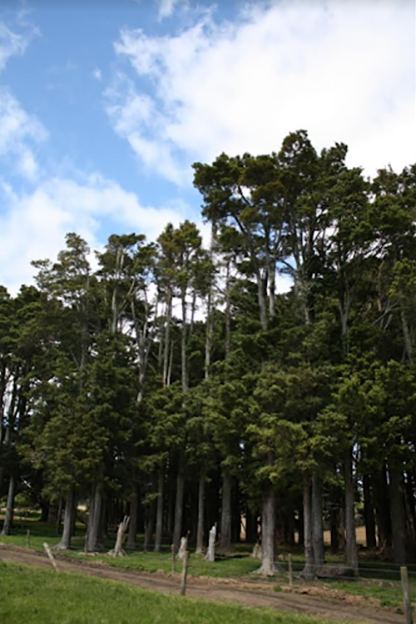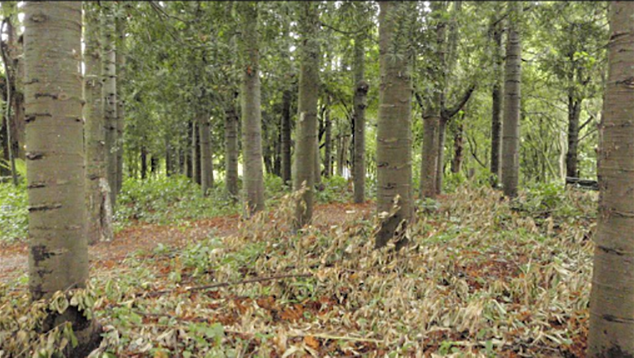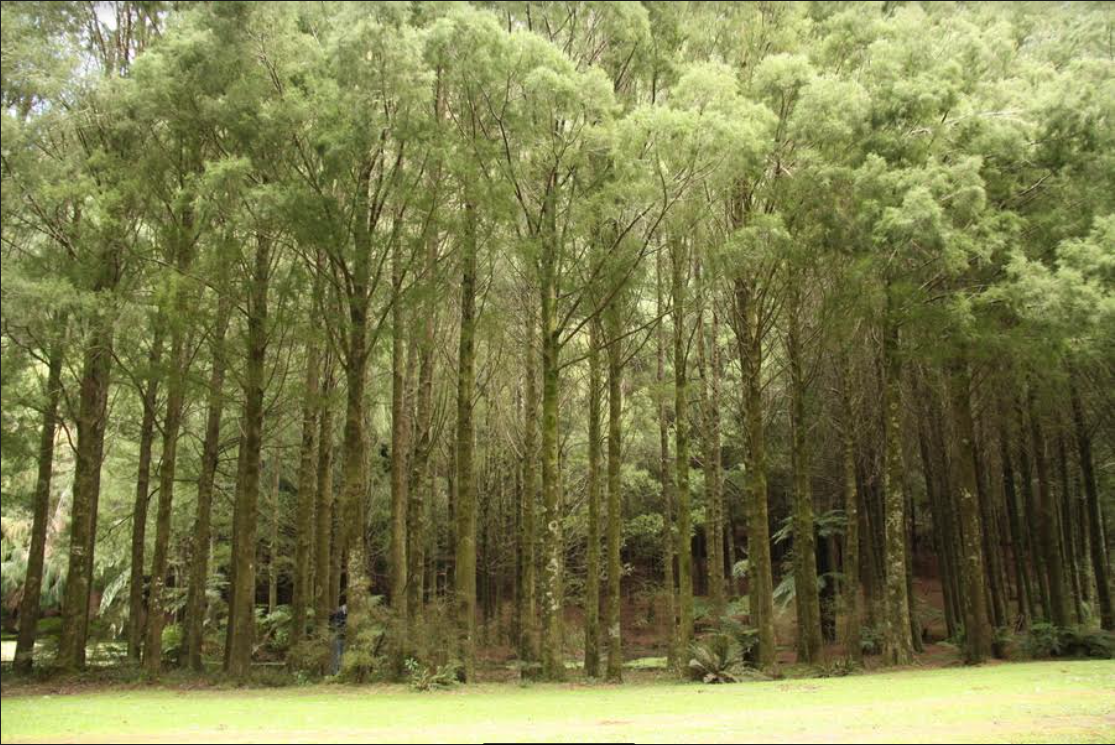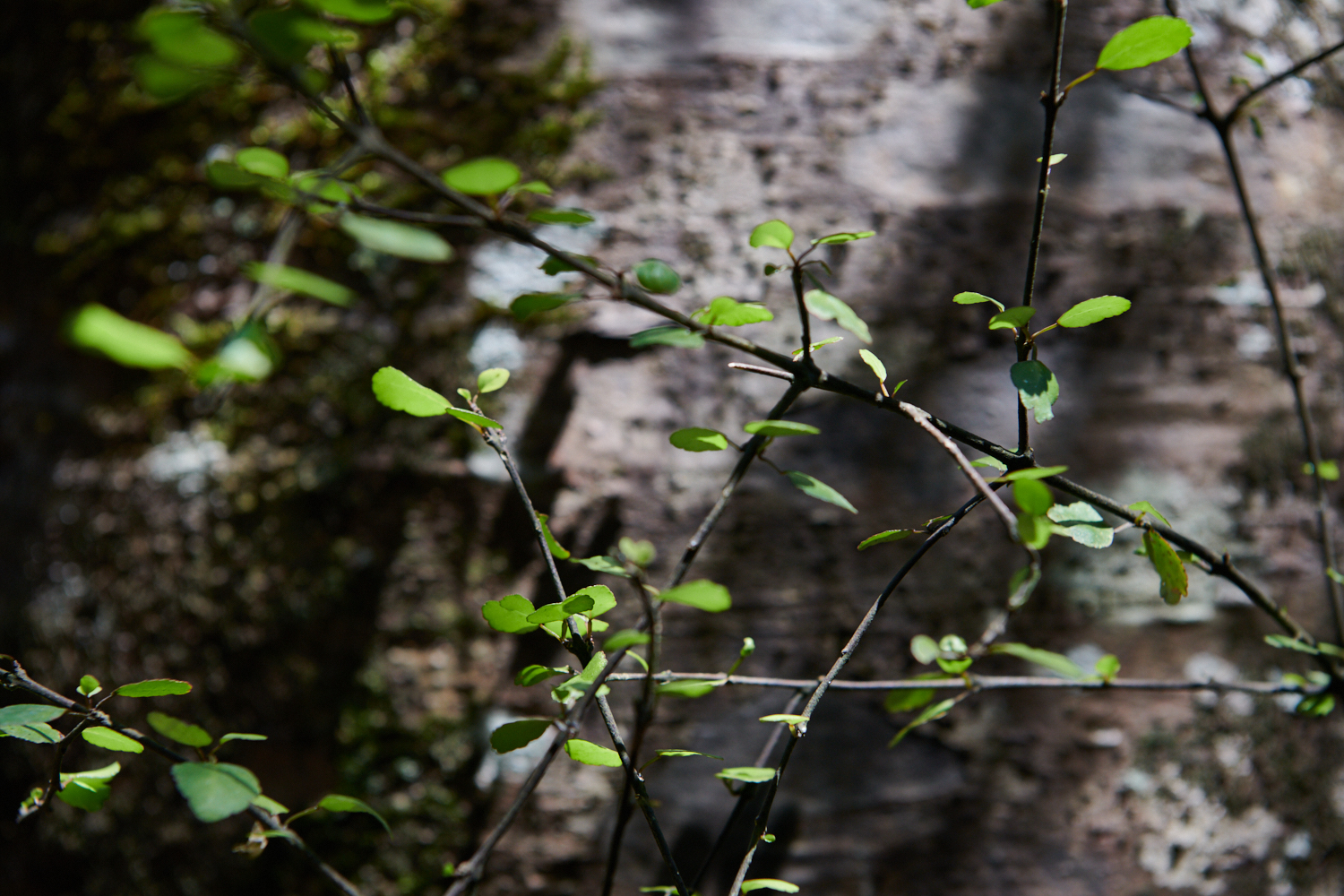Native forests are likely to be encouraged as a way to help New Zealand meet its carbon emissions reduction targets. It is important to understand the rate at which these forests remove carbon from the atmosphere over time, and store it in their woody biomass. Native species growth data amassed over many years by Tāne’s Tree Trust is the best available, and shows that, over the longer term and even in the medium term, native species can compete with exotic species in terms of carbon removal and storage.
Concerns about elevated atmospheric CO2 usually focus on their biggest source – combustion of fossil fuels. However, forests also play a critical role. Trees store enormous quantities of carbon in their stems, roots and branches and when a forest is destroyed, there is a release of CO2 into the atmosphere. It is believed that one third of human-induced carbon emissions since pre-industrial times have come from land use change, mainly forest clearance. The flip side is that recovering forests can remove large quantities of CO2 from the atmosphere.
Native forests and carbon in New Zealand
The historic role of forests in New Zealand is much greater than in most other countries. Before humans arrived, forests covered 85% of our land area but we have reduced this to only 38%. It is likely that the CO2 released from historic forest clearance is greater than the CO2 released by burning fossil fuels over the past two centuries.
We can see this by considering the immense quantity of carbon stored in our remaining native forest. Over the past two decades, the Ministry for the Environment (MfE) has conducted an inventory of New Zealand’s native forests which shows they store carbon equivalent to 6.6 billion tonnes of CO2, more than 180 times our current annual CO2 emissions.
However, although our native forest stores a vast quantity of carbon, MfE’s forest inventory indicates it is currently carbon neutral. This is because the forests are mature, and the CO2 their growing trees remove from the atmosphere is in balance with the CO2 lost by decaying wood from dead trees.
”"It is likely that the CO2 released from historic forest clearance is greater than the CO2 released by burning fossil fuels over the past two centuries - the flip side is that recovering forests can remove large quantities of CO2 from the atmosphere
Beginning to reverse our forest loss
New Zealand’s climate and soil are well suited to forestry and beginning to reverse the forest clearance of previous centuries by planting new forests will be essential if we are to meet our target of becoming carbon neutral by 2050. Much of the focus will be on planting forests of native trees, and the current government has a goal of establishing large areas of native forest over the coming decades.
It is therefore important to have a good understanding of the rate at which planted native forests will remove CO2 from the atmosphere. There is surprisingly little clear information on this subject although there is a widespread perception that native trees store carbon at much lower rates than many exotic tree species such as radiata pine. But how true is this?
In the rest of this article, we will refer to the ‘CO2 removal rate’ of a forest, which we define as the weight of CO2 removed by each hectare of forest every year. To get a better understanding of what a CO2 removal rate means in practice, note that New Zealand’s annual CO2 emissions are currently 35 million tonnes, or about 19 tonnes per household. Therefore, if a forest has a CO2 removal rate of 19 tonnes, each hectare of that forest will cover the emissions of one average household. Note that a forest can continue to remove CO2 year-on-year for many decades although the process will eventually cease once the forest is fully mature. However, so long as the forest remains intact, the carbon will remain safely stored in its trees.
Look-up tables for exotic and native forest
One obvious source of information about CO2 removal rates is the look-up tables published by the Ministry for Primary Industries for use by small forest growers in the emission trading scheme. Note that forest growers with more than 100 hectares are required to use the Field Measurement Approach whereas small forest owners use the look-up tables.
According to the look-up tables, averaged over the 50 years from planting, the CO2 removal rate for radiata pine forest is 25 tonnes, the rate for Douglas-fir forest is 19 tonnes, and the rate for other exotic softwoods is 13 tonnes. However, the rate for native forest is only 6.5 tonnes.
It is hardly surprising that radiata pine which has been selected by foresters for its exceptional growth rate in New Zealand conditions leads the pack.
But are native forests really such mediocre carbon storers?
How reliable are the native forest look-up tables?
The answer is that they are probably not very reliable for planted native forest as they are based on data from regenerating shrublands (MPI 2017), which have less carbon storage potential than taller forests.
Examples of planted native stands
A better source of information is Tāne’s Tree Trust (TTT) whose aim is to assist New Zealand landowners plant and manage native trees. Tāne’s Tree Trust has been collecting tree measurements from stands of planted native trees for many years. Planted native stands are often small in scale, poorly managed, and on less productive land. Nevertheless, the database TTT has amassed represents the most comprehensive set of planted native tree and shrub measurements available.
By applying the same carbon models used in MFE’s forest inventory. Tāne’s Tree Trust have been able to estimate the carbon from their measurement data of planted native trees and shrubs. Here are three examples of planted native conifers from the Tāne’s Tree Trust database:
- A grove of planted totara in Northland which was 102 years old when last measured making it the oldest stand represented in the database. Over the century since these trees were planted, their average CO2 removal rate was 15.6 tonnes.

A 102 year-old totara plantation, Puhipuhi, Northland. Credit @mikeb_nz
- 2. The two-hectare stand of kauri planted in Taranaki by Fred Cowling in the 1940s. The CO2 removal rate of this stand averaged since planting is 18.9 tonnes.

Planted kauri, 70 years old, Fred Cowling Reserve, Taranaki. Credit @mikeb_nz
- 3. A grove of kahikatea planted by Harold and Dorothy Holt in Hawke’s Bay which was 40 years old when last measured. Its CO2 removal rate averaged since planting is 21.1 tonnes..

Kahikatea planted in 1980, Holts Forest Trust arboretum, Hawkes Bay. Credit @mikeb_nz
”These three examples demonstrate that native conifer species such as totara, kauri and kahikatea can have CO2 removal rates comparable to those of Douglas-fir, the second most important commercial exotic conifer grown in New Zealand.
However, not all planted stands of New Zealand natives will achieve these levels of carbon storage. Analysis of the database indicates that high CO2 removal rates only occur in stands with sufficient numbers of trees per hectare, with all the above examples having more than 1,000 trees per hectare. Secondly, these examples are also from reasonably old stands, with ages ranging from 40 to 102 years and we generally find that native tree species require several decades from planting before they achieve high CO2 removal rates.
The hare and the tortoise!
The potential carbon sequestration of planted native forest can be examined in more detail using the TTT Carbon Calculator for Planted Native Forest which was developed from the TTT plantation database. The Calculator predicts that a stand of native trees planted at 1,250 trees per hectare has a CO2 removal rate of only 6 tonnes over the first 30 years after planting, but this increases to 20 tonnes between ages 30 and 60 years, and further increases to 27 tonnes between ages 60 and 90.
This growth pattern of the CO2 removal rate steadily increasing over many decades after planting for natives contrasts with the pattern of radiata pine where the CO2 removal rate peaks before age 20 years and then gradually declines. So, for a landowner wanting to plant carbon forestry, it is a matter of choosing between the hare and the tortoise – radiata pine for a quick return or natives as the long-term option.
Shrubs as a nurse
TTT suggests that one way of filling the low CO2 removal rate in the first few decades after planting is to combine tree species with shrub species such as manuka. We recommend this style of planting for other reasons; inter-planting tree species within a nurse crop of shrubs provides essential protection for tree species in the early years following planting. On many sites, this mimics natural successional processes whereby hardy fast-growing shrub species firstly colonise exposed, open sites, ameliorating them for subsequent establishment of our usually more sensitive native tree species.
Pure shrub stands are widely planted for environmental reasons often at close spacings. The Carbon Calculator predicts that a pure shrub stand planted at a 1.5 m spacing has a CO2 removal rate of 17 tonnes to age 30 years, but the rate declines sharply beyond this age. However, if every fourth shrub is replaced with a tree seedling such as a totara or kahikatea, the CO2 removal rate of this mixed tree/shrub stand is 18 tonnes over the first 30 years, 22 tonnes between ages 30 and 60 years, and 19 tonnes between ages 60 and 90 years.
So, planting mixtures of native trees and shrubs can remove CO2 from the atmosphere at satisfactory rates from an early age. However, CO2 removal rates are not the only factors to consider in carbon forestry.

Credit @alistairguthrie
Longevity and carbon storage capacity of native forest
Two other important considerations are the life expectancy of the trees, and the carbon storage capacity of the mature forest. Firstly, life expectancy is important because carbon forests are generally intended to be managed as permanent forests, with in some cases an occasional judicious thinning when stands become overstocked, providing a potential long-term timber crop. In terms of longevity, native conifers, which are exceptionally long-lived, have a clear advantage over radiata pine.
Secondly, carbon forests should ideally have a high carbon storage capacity. Here again, native conifers should perform well. It will be centuries before we know for certain the final carbon storage capacity of planted native trees. However, we can safely infer that it will be high on the basis of examples of groves of very large native conifer trees in our natural forests which can carry high levels of carbon per hectare.
Dr Mark Kimberley



Leave a comment